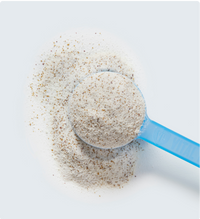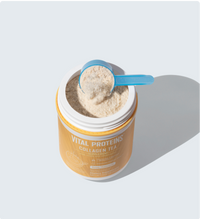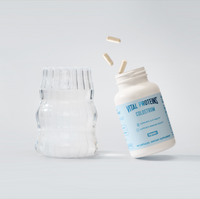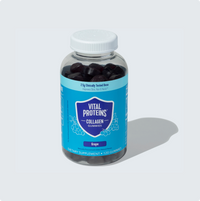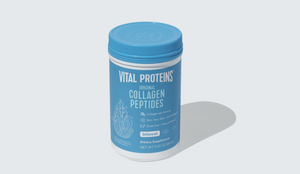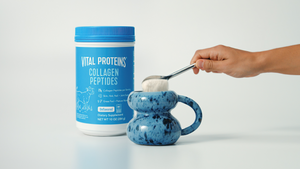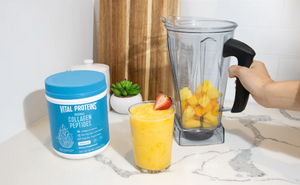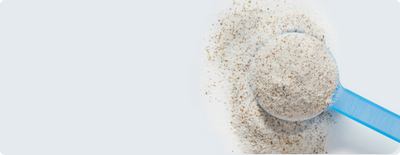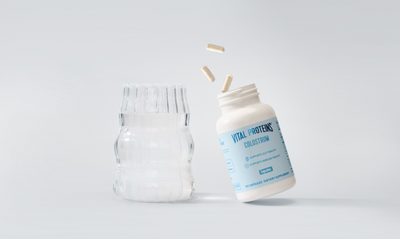Whether you’re a fitness junkie or a total novice, fitness questions like “Why does my face get red when I work out?” are bound to come up at some point.
To answer your most burning workout questions, we turned to the fitness experts. Consider their answers the pep talk you need to totally crush your next workout!
What Type of Exercise Is Best for Weight Loss?
“Contrary to popular belief, excessive amounts of cardio is not the best exercise when you're trying to lose weight or body fat,” says Deidre Helton, a Denver-based nutritionist and Certified CrossFit Level 3 Trainer and CPT. “Cardio like running, an elliptical or rowing will burn calories while you’re exercising. Strength training, on the other hand, will burn calories for the hours following exercise, as your metabolism is increased thanks to strength training. Strength training also creates an insulin sensitive environment in our bodies, making it able to utilize carbohydrates effectively without blood sugar spikes and crashes.”
Why Does My Face Get Red When I Work Out?
“Red face during exercise is natural,” says JR Fletcher, author and nutrition expert. “Physical activity triggers a response within our circulatory system that in turn, affects our skin. Once we get busy in the gym, our body automatically regulates our body temperature, produces sweat and changes skin color. First, the skin dilates its capillaries to expel heat. Secondly, capillary dilation causes our blood to rise closer than normal to the skin’s surface. As a result, your skin appears more red than normal.”
Is There Any Way to Prevent My Face from Getting So Red When I Work Out?
“If you’re shy or concerned about your face becoming too rosy during your workout, don’t despair,” says Fletcher. “There are simple steps you can take to help … Since red face is the result of our body reacting to an increase of its temperature, choose cooler temperatures. Cooler places to exercise are an ideal choice. Also, allow your workout clothing to fit more loosely than before or use a more breathable outfit. Your skin needs room to expel the heat being produced during exercise. Thus, the more breathable your fabrics are and cooler the environment your exercise in, the less likely you are to get red.”

I’m So Sore from My Workout. What Can Help with Recovery?
“The best way to recover from any workout or intense movement, is active recovery,” says Meghan Braun, doctor of physical therapy at Body Mechanics Physical Therapy, as well as a certified strength and conditioning specialist.
“Meaning, don't go sit on your couch and watch Netflix for hours afterwards. Focus on low load, longer duration stretches, light/recovery yoga and general movement. Drinking plenty of water, and replacing and replenishing the electrolytes you lost during a workout also helps muscles and other tissues such as ligaments, tendons, bones and even your brain, lungs and heart get more blood flow. Keeping the blood flowing is what helps us to ‘flush’ out the toxins, along with the lymphatic system**. So keep it moving!”
How Long Does It Usually Take to Start Seeing Results from Working Out?
This can vary person to person, and how dedicated one may be,” says Jeremy Vaughan, founder of JVMovement. “Setting it up so we can celebrate every step forward and learn from any step backs is paramount to feeling successful. When I work with clients, I tend to see their movement patterns start to change after the first 3-4 weeks. Usually for a progression style program of movements, I set the program up for 12 weeks. So that at the end of the 3 months, you’ve experienced a few different variations of the original exercise itself, or you’ve progressed to a different movement.”

How Can I Stick to My New Fitness Routine?
“Having a goal increases the likelihood of your success, so start with the end in mind and decide on a large, long-term goal (think 12+ months),” says Sarah Ray, an ACE-certified health and fitness expert.
“Break that long-term goal down into smaller, more actionable benchmarks: Create a reward system for every 3 months completed towards that 12-month goal. Just make sure your reward doesn't counter your newfound healthy habit (a new outfit for the gym is much better motivation than a big splurge meal). Another tip is to tell someone about your new habit! When you mention to friends, loved ones and even coworkers you are embarking on a new routine, they start to ask you about it and check in on your progress. This accountability will create an extrinsic layer of motivation that will keep you committed so that when your cube mate Karen asks how the new 6am spin class is going, you won't have to tell her you bailed last week. A feel-good side effect is that you may find out your new habit inspired someone else!”
RELATED: Best Abs Ever: Try Lively's Ab Workout Challenge
I Want Abs! What’s the Best Exercise for a Flat Tummy?
“There is no such thing as spot treating an area of the body with certain exercises,” says Helton. “This means that no amount of sit ups or crunches will automatically get you a flat stomach. However, many exercises utilize core strength including gymnastics movements and strength training. Any movement that works the front side of your body will be helpful for creating a flat stomach and abs, though much of this work happens in the kitchen and by supporting intestinal health.”

I'm New to Working Out. Where Do I Start?
“Begin by being patient enough to educate yourself before you start to exercise,” says Fletcher. “First, learn about what type of physical activity is best for you to achieve the results you need. Choices of working out should be based on your age, height, weight and current physical condition. Secondly, invest in workout clothing, your personal time and consistency. What you wear during exercise, scheduling of your workouts and remaining consistent with your exercising is a great way to start. Thirdly, select two days a week of exercise consisting of 15 reps and three sets each day. In addition, performing stretching before and after in order to condition the muscle groups that you intend to exercise.”
Is It Better to Work Out Before or After Eating?
“In most cases, eating before a workout is essential,” says Helton. “If you are doing any type of exercise that requires lifting, high intensity or interval work, eating beforehand is essential for getting the most out of the workout. Our muscles, including our heart, require energy to function properly. Without food beforehand, you can feel dizzy, light-headed, fatigued, nauseous and hit a wall much earlier in your workout. Working out fasted puts unnecessary stress on our bodies. Fasted cardio is the only time going without food before exercise is a good idea, but make sure to be safe in the event of dizziness.”

What Should I Be Eating Before and After a Workout?
“There is no one-size-fits-all answer!” says Ray. “Many factors play into the way you can optimize your training and maximize those results: What time of day you work out, what type of training you're doing, how your body digests certain food groups, etc. It is important to experiment and take notes to find the right fit for you. A good rule of thumb, though, is to eat a small amount of protein and some easy-to-digest carbohydrates 1.5-2 hours before your workout. Avoid high-fat foods, too much protein and eating too soon before you train to prevent digesting while you're doing your squats. After your workout, more protein and more carbohydrates plus lots of water to restore all those nutrients depleted through training & to speed the recovery process so you can wake up and crush it again tomorrow.”
RELATED: A 30-Minute Workout That Will Get Your Heart Pumping
What Sort of Things Should Always Be in My Gym Bag?
“You should always have an emergency pre-workout snack in your gym bag, like a banana,” says Helton. “Branched-chain amino acids (BCAAs) are also essential because they support athletic performance, but also enhance muscle growth while providing assistance with weight loss, reducing fatigue and preventing soreness post-workout**. For the ladies, hair ties! They are always disappearing!”
Why Do I Feel Cold After Workouts?
“That cold feeling you experience after you’re done exercising is your body’s natural response to heat caused by activity,” says Fletcher. “As the human body heats up during a workout, heat is then expelled through the pores immediately and rapidly. Therefore, our body all of a sudden loses the heat reserves that keep us feeling our usual warmth. Solve this issue of the chills by remaining active at a lower rate of pace for about 10 minutes after your regular routine. As a result, you will allow your body to expel heat and wind down at a gradual pace instead of abruptly.”

What Stretches Should I Always Do Before and After a Workout?
“NEVER skip your dynamic warm-up before a workout...this will dramatically decrease your likelihood for injury,” says Braun. “Think of priming your muscles before you ask them to do whatever it is you are asking them to do. Our bodies are like a computer or car; they need a second to turn on and get the juices flowing, so give them that chance with a great dynamic (movement) warm-up.
“DO NOT hold stretches for long durations prior to working out since this actually inhibits the muscles and tells them it's time to rest and relax and can often lead to decreased performance and increasing chance of injury. Save the long stretching times and duration for after your workout, during your rest and recovery time!”
RELATED: How to Tell If Total Body Workouts Are for You
Should I Do Cardio First or Strength Training?
“Cardiovascular training should be your springboard into strength training since cardio is a lighter workout,” says Fletcher. “Allow the former to condition and strengthen your muscles, then graduate to the latter. It’s very important to take exercise gradually because your muscles are more responsive to strength built over time.”
I Live in an Apartment Building. What Are Some Good At-Home Exercises I Can Do That Won’t Upset My Neighbors?
“Physical activity doesn’t always have to consist of high-impact and loud-hitting moves,” says Fletcher. “Thankfully, your neighbors can rest easily as you perform low-impact cardiovascular workouts from the comfort of your apartment. Just be sure to keep the music down or wear a pair of wireless ear buds while you are doing your thing! If your goal is to strengthen muscles, burn fat and tone your body, cardio is your ally. Furthermore, this type of activity features routines that are relatively quiet and can be done with minimal movement. Examples of effective quiet cardio workouts: lunges, planks, twists and squats. These four exercises are great for getting toned and burning fat with little noise. Rest assured, you will still be moving and working up a sweat."

What Are the Biggest Mistakes People Make When Working Out?
“I think the biggest mistake someone can make when working out is trying to do too much, too often,” says Ray. “Work + Rest = Success. Trying to lift weights and then do cardio and then take a yoga class might leave you feeling unstoppable on day 1, but by day 5, you're sore, tired, unrecovered and overwhelmed. Taking on too much just leads to burnout, and you are much better off breaking your workouts into smaller pieces throughout the week.”
I Am So Not a Morning Person. How Can I Motivate Myself to Get My Morning Workouts Done?
“The fewer obstacles in your way, the less likely you are to put it off or snooze eight more times,” says Ray. “Lay out your clothes, prep your pre-workout snack, set your alarm to your favorite workout pump-up jam and embrace a positive mindset. Oh, and the self-brewing coffee pot is a true blessing for those learning to love the morning.”

